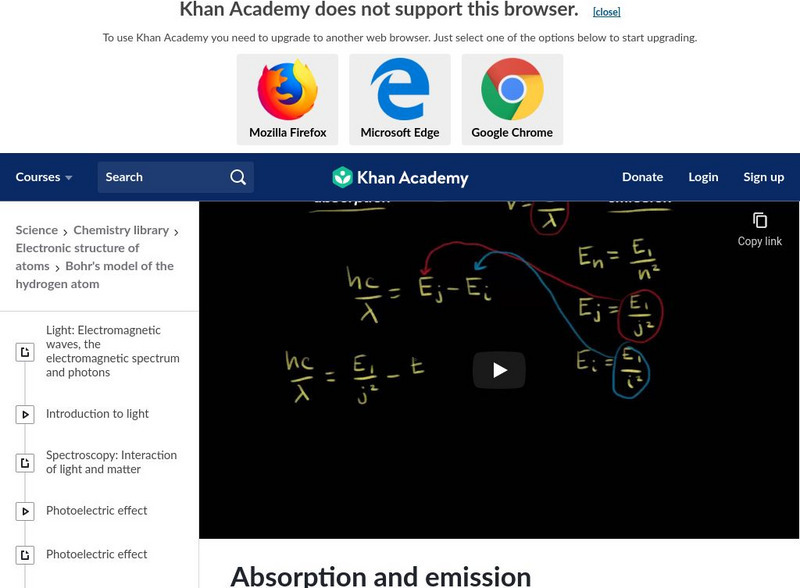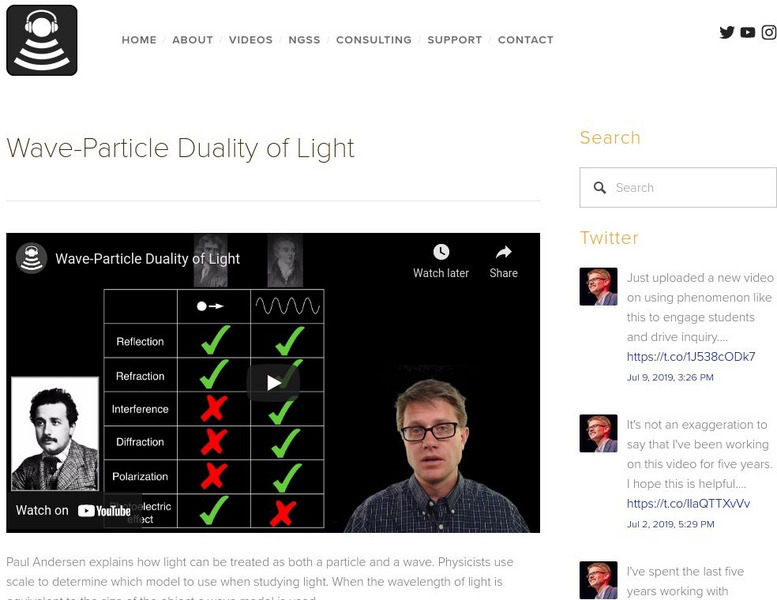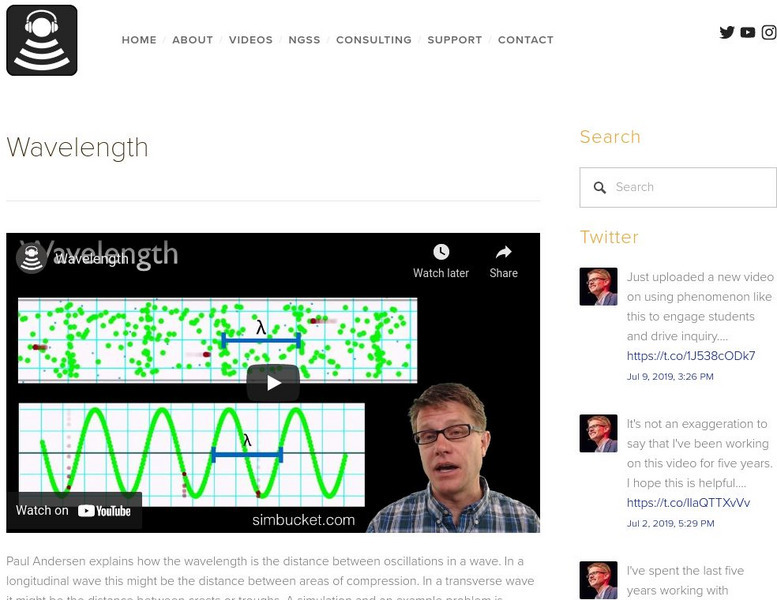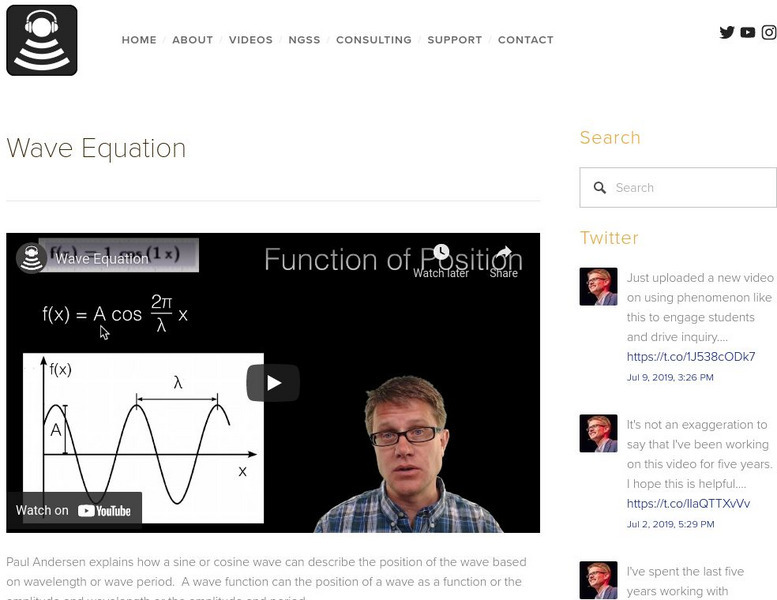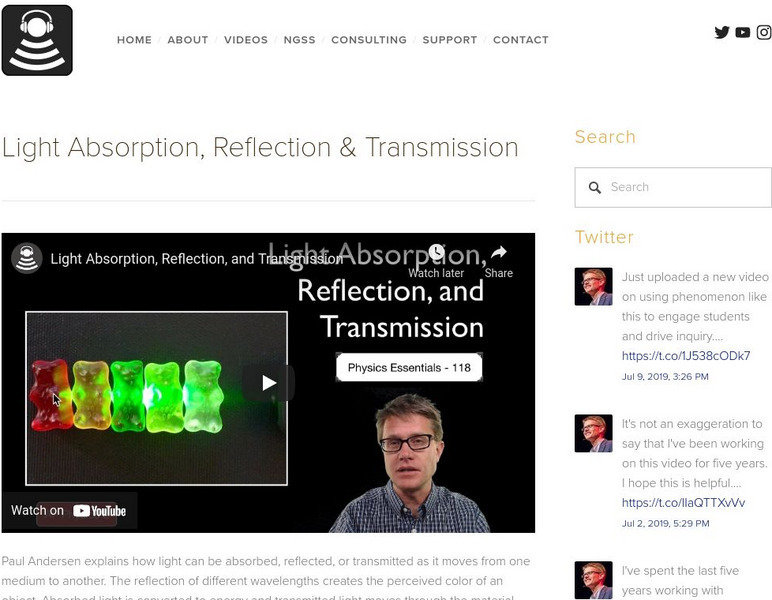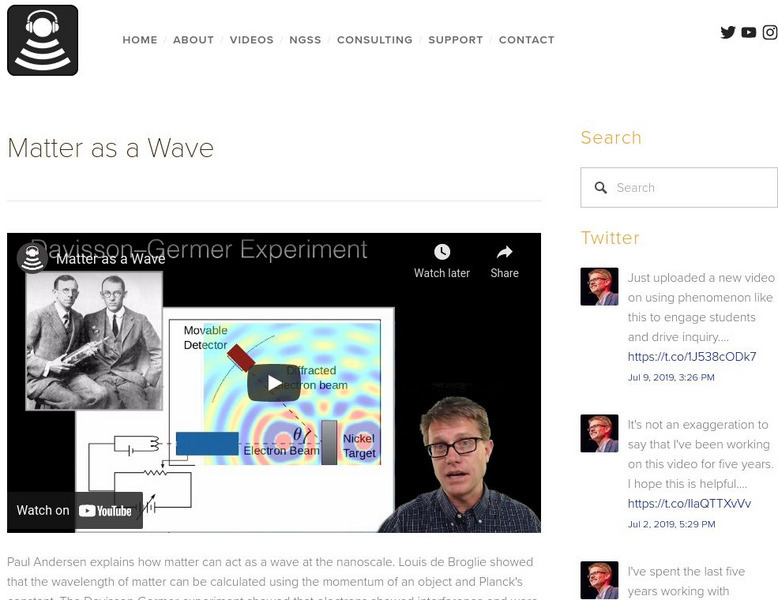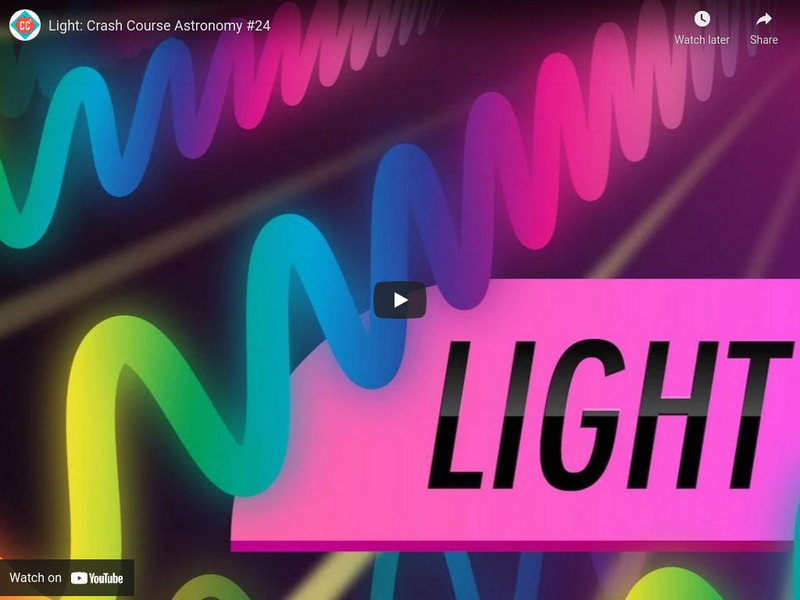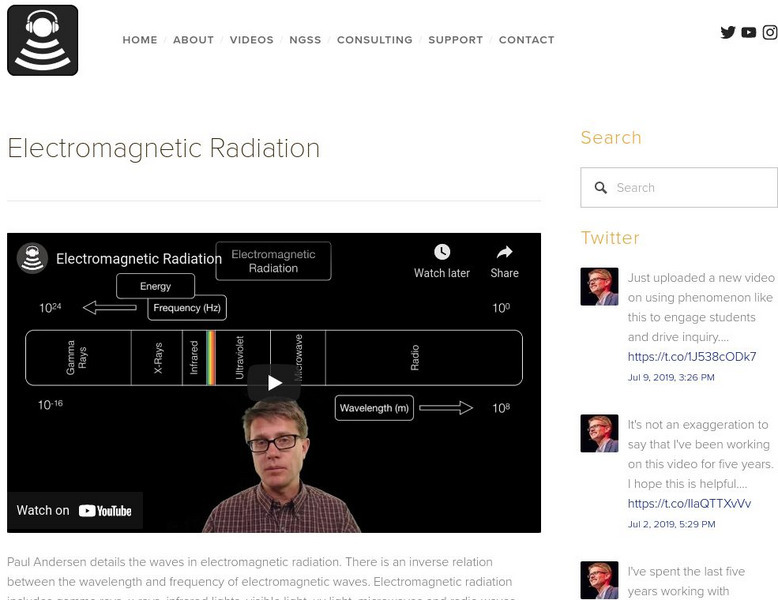PBS
Measuring Waves | UNC-TV Science
Discover the secrets used by scientists to measure mechanical waves. Young physicists learn about measurable wave qualities—amplitude, wavelength, and frequency—by watching and listening to a video discussing longitudinal and transverse...
PBS
Electromagnetic Spectrum | UNC-TV Science
Illuminate lightwaves, even those not visible to the human eye, in a concise activity about the electromagnetic spectrum. Pupils watch and listen to an animated video describing the electromagnetic spectrum as well as frequency and...
Curated OER
The Science of Light
We really only see objects that emit light, either on their own or by reflecting light from another source. Past misconceptions of light are illustrated, and current understandings of light illuminated. This could be used as an...
Curated OER
The Electromagnetic Spectrum
Did you know that the visible light wavelengths comprise only one inch of the electromagnetic spectrum that extends over 2,000 miles? Yet even the visible spectrum provides so much information. The Hydrogen spectrum is illuminated as an...
Curated OER
STEMbite: Standing Waves
The casual voice of the filmmaker explains standing waves using a linked chain bordering a neighborhood parking lot, a bucket of blue-colored water, and a rope tied to a fan blade. He uses the appropriate vocabulary (frequency,...
Khan Academy
Khan Academy: Introduction to Light
Video provides a basic introduction to the phenomenon of light, the electromagnetic radiation spectrum, wave and particle-like behavior, and how to calculate the wavelength or frequency of a light wave. [9:36]
Khan Academy
Khan Academy: Absorption and Emission
An explanation of the absorption and emission of energy using shell models. [10:30]
Bozeman Science
Bozeman Science: Wave Particle Duality of Light
In the following video Paul Andersen explains how light can be treated as both a particle and a wave. Physicists use scale to determine which model to use when studying light. When the wavelength of light is equivalent to the size of the...
PBS
Pbs Learning Media: Pitch: Super Sounding Drums
This video segment, adapted from ZOOM, explores sounds made by homemade drums of different sizes, shapes, and materials. [3:41]
PBS
Pbs Learning Media: Crash Course Astronomy: Light
In order to understand how we study the universe, we need to talk a little bit about light. Light is a form of energy. Its wavelength tells us its energy and color. Spectroscopy allows us to analyze those colors and determine an object's...
Sophia Learning
Sophia: Wave Speed: Lesson 1
This lesson will show how to calculate wavelength and determine wave speed. It is 1 of 2 in the series titled "Wave Speed."
Bozeman Science
Bozeman Science: Wavelength
In the following video Paul Andersen explains how the wavelength is the distance between oscillations in a wave. In a longitudinal wave this might be the distance between areas of compression. In a transverse wave it might be the...
Bozeman Science
Bozeman Science: Wave Equation
In the following video Paul Andersen explains how a sine or cosine wave can describe the position of the wave based on wavelength or wave period. A wave function can the position of a wave as a function or the amplitude and wavelength or...
Bozeman Science
Bozeman Science: Physics: Diffraction Effects
Paul Andersen explains how diffraction can be affected by the size of the wavelength. When waves pass through an opening or move around an obstacle, a shadow region is created. The size of the shadow zone will decrease as the wavelength...
Bozeman Science
Bozeman Science: Harmonics
In this video Paul Andersen explains how the wavelength of a standing wave is determined by the boundary length and frequency of the wave. The fundamental frequency has a wavelength double the boundary length. Harmonics are built on the...
Bozeman Science
Bozeman Science: Light Absorption, Reflection & Transmission
In the following video Paul Andersen explains how light can be absorbed, reflected, or transmitted as it moves from one medium to another. The reflection of different wavelengths creates the perceived color of an object. Absorbed light...
Bozeman Science
Bozeman Science: Matter as a Particle
In the following video Paul Andersen explains how matter, like light, can be treated as both a particle and a wave. Louis de Broglie proposed that matter could act as a wave and described the wavelength of matter as a function of...
Bozeman Science
Bozeman Science: Matter as a Wave
In the following video Paul Andersen explains how matter can act as a wave at the nanoscale. Louis de Broglie showed that the wavelength of matter can be calculated using the momentum of an object and Planck's constant. The...
Crash Course
Crash Course Astronomy #24: Light
In order to understand how we study the universe, we need to talk a little bit about light. Light is a form of energy. Its wavelength tells us its energy and color. Spectroscopy allows us to analyze those colors and determine an object's...
PBS
Pbs Learning Media: Inverse Square Law
This animation from KET's distance learning physics course demonstrates the mathematical formula for a scientific law as it applies to light.
Bozeman Science
Bozeman Science: Wave Speed
In the following video Paul Andersen explains how the wave speed measure the speed of a wave through a medium. The medium determines the speed of the wave. The velocity of the wave is equal to the product of the wavelength and the...
Bozeman Science
Bozeman Science: Electromagnetic Radiation
In the following video Paul Andersen details the waves in electromagnetic radiation. There is an inverse relation between the wavelength and frequency of electromagnetic waves. Electromagnetic radiation includes gamma rays, x-rays,...
Crash Course
Crash Course Physics #17: Traveling Waves
Waves are cool. The more we learn about waves, the more we learn about a lot of things in physics. Everything from earthquakes to music! Ropes can tell us a lot about how traveling waves work so, in this video episode of Crash Course...
Khan Academy
Khan Academy: Amplitude, Period, Frequency and Wavelength of Periodic Waves
A video looking at the properties of periodic waves, including amplitude, period, frequency, and wavelength. [14:26]






